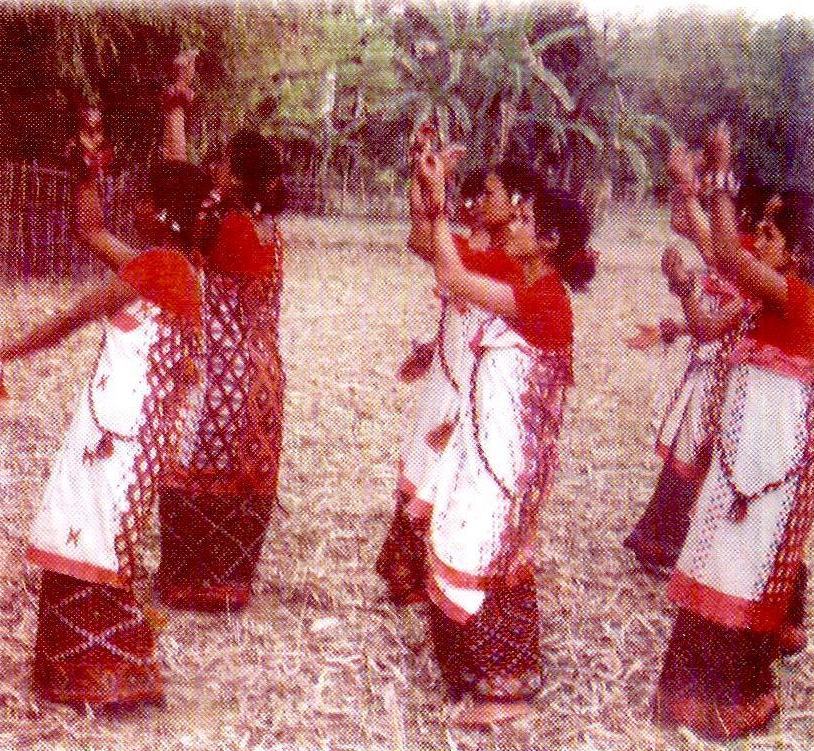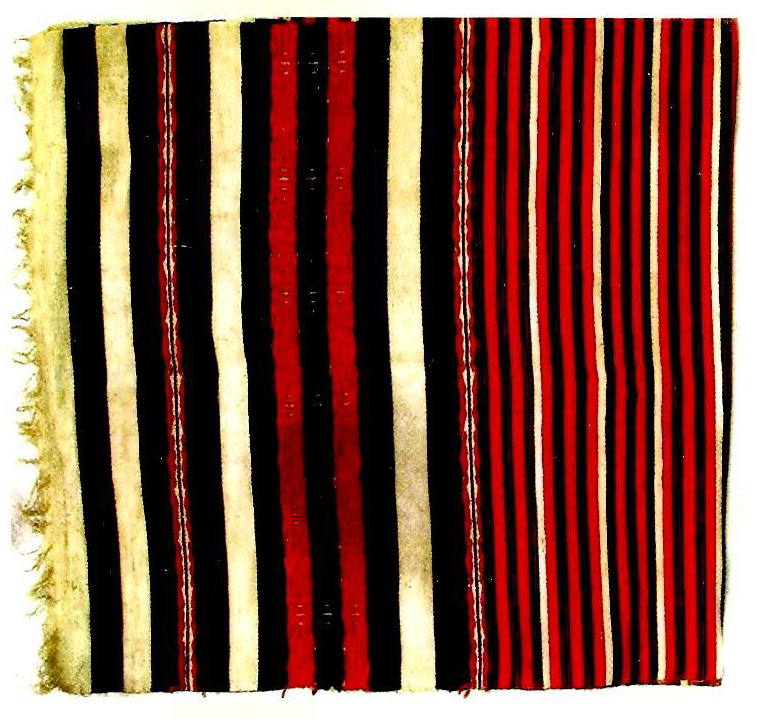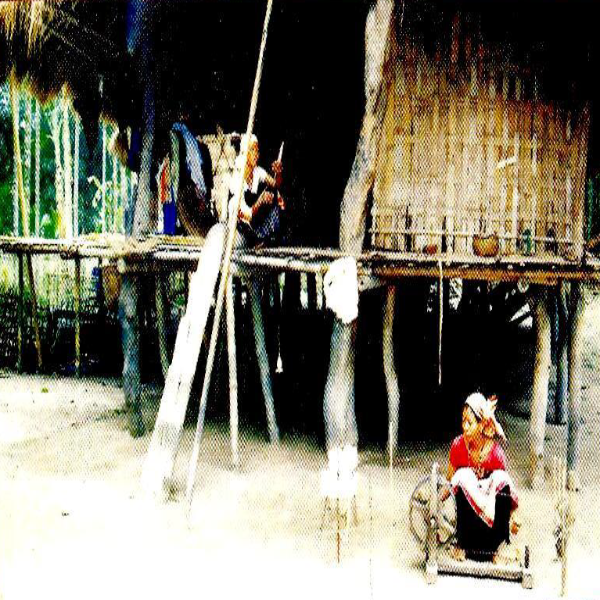Themes
tribal clothing and textiles
Mising Traditional Attire & Weaving, assam

Gadu is a dense, hand-woven shawl that is of considerable cultural significance to the Mising tribe. Mostly, it is used in winters or on occasions like festivals and ceremonies. It is made on the traditional loom with intricate designs. Its basic style consists in natural colors in geometric patterns, with the characteristic signs of Mising weaving techniques. That's why it is a symbol of warmth, hospitality, and social status in Mising society. It is generally exchanged as a gift during weddings and community gatherings, representing the skills passed down through generations.
Mibu Galuk is a customary upper garment worn proudly by Mising men, especially during festive occasions and cultural performances This is a sleeveless jacket handwoven using cotton material. Jacket designs may be classified under the category of a simple stripe or other more intricate motifs derived from nature Mibu Galuk is worn with a loincloth called Gonro Ugon to complete the attire for males. The attire made with indigenous weaving techniques thus remains an exclusive identity of the Mising.
Ri:bi gasor is a unique ethnic wear of Mising women. It is wrapped like a skirt around the body and fastened with a thin waistband. The traditional fabric of warps with natural fibers and dyed with earthy colors. Ri:bi gasor is a walking canvas of fine geometric and floral designs that reflect the creativity of the weaver. This garment symbolizes cultural pride and traditional aesthetics in daily wear and ceremonial dress for the Mising women.

Mising weaving techniques are deeply rooted in traditional handloom practices using wooden looms passed down through generations. Weaving, an activity primarily done by women, turns out beautiful fabrics rich in colors and patterns. Warping and dyeing the yarn are the forerunners to labor-intensive processes for weaving intricate designs. Their use is sustainable and nurturing of our heritage. The patterns usually tell stories about nature, history, and mythology, thus each piece of fabric is a cultural artifact.

The Mising tribe utilizes natural dyes from all kinds of natural materials such as plants, flowers, and minerals for coloring the textiles. The pigments obtained from indigo, turmeric, and tree barks are often used. They have a great tradition of such dyeing methods that give rich earthy tones which are environmentally friendly and long-lasting. It consists of a very long and painstaking procedure where the dyes have to be prepared and absorbed properly as well. This eco-friendly approach reflects the deeper understanding of nature and sustainable craftsmanship held by the tribe.

